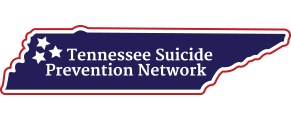No one experiences alcohol addiction the same way as someone else. Understanding the signs, symptoms and side effects of alcohol addiction is a key component toward starting the recovery journey.
Understanding Alcohol Addiction
Learn about alcohol addiction and substance abuse
Alcohol, a legal way for people over the age of 21 to loosen up and have a good time is becoming an alarmingly common component to teen parties. Alcohol use and underage drinking, the usage of alcohol before the minimum drinking age of 21 years, among teens is on the rise. Teens are not always aware that alcohol, while a legal substance for those over the age of 21, poses greater risks and leads to more damaging effects that impact their own lives, communities, families, and health. Underage drinking is a widespread public health concern that poses far greater risks than any potential benefits.
Statistics
Alcohol addiction statistics
Alcohol is the most frequently used drug by teens in the United States. Approximately half of junior high and high school students drink alcohol on a monthly basis; 14% report that they have been intoxicated at least once in the previous year. This means that in 2009 at least 10.4 million people between the ages of 12 and 20 drank more than a “few sips” of an alcoholic beverage. By age 15, at least half of adolescents report having had at least one drink; by 18, that number climbs to 70%. Almost 8% of teens who drink say they binge drink, or drink five or more alcoholic drinks in a row.
Causes and Risk Factors
Causes and risk factors for alcohol addiction
Generally, it’s accepted that addiction to drugs or alcohol is not the result of a single factor; rather it is a complex interplay of genetic, environmental, and physical risk factors working together to create addiction. The most commonly accepted theories about addiction include:
Genetic: Addiction is known to have a familial component. Teens who are born into families in which addiction affects a close relative are four times more likely to develop an addiction themselves than peers without a similar history. However, addiction does develop in many without a family history.
Physical: With chronic, repeated use, alcohol use can actually change the structure and function of the still-developing brains of teenagers. Without treatment, these changes may result in addiction to alcohol and other drugs.
Environmental: Teens who are under intense amounts of personal stress are at greater risks for using alcohol as a means to cope with the pressures of daily life. Additionally, being raised in a family in which addiction or alcoholism was present can increase the likelihood a teen will go on to develop problem drinking.
Risk Factors:
- Racial groups such as Native Americans and Alaskans are at greater risk for developing an addiction to alcohol
- Presence of mental health disorders
- Being male
- Family influence – teens who live in a home in which alcohol is available are at greater risk for developing an alcohol use disorder
- Peer influence – if using alcohol and achieving intoxication is acceptable and encouraged in a peer circle, a teen has a greater risk for developing alcoholism
Signs and Symptoms
Signs and symptoms of alcohol addiction
The signs and symptoms of alcohol use in teens will vary tremendously based upon individual genetic makeup, presence of other drugs, amount of alcohol consumed, and the frequency in which a teen consumes alcohol. The most common signs and symptoms of teen alcohol abuse include:
Behavioral Symptoms:
- Drastic changes in academic performance
- Changing groups of friends
- Loss of interest in previously-enjoyed activities
- Decreased personal hygiene
- Marked behavioral changes
- Sudden, inexplicable need for money
- Increased interpersonal struggles
- Unusually passive or argumentative behaviors
- Increased legal problems
- Alcohol use in spite of consequences
- Neglecting responsibilities at school, work, or home
Physical Symptoms:
- Smell of alcohol on breath or clothes
- Glazed, bloodshot eyes
- Flushed, reddened skin
- Slurred, garbled speech
- Appearing intoxicated
- Changes in sleep pattern
- Notable deterioration in physical appearance
- Coordination problems
- Double vision
Cognitive Symptoms:
- Difficulty concentrating
- Short-term memory deficits
- Difficulty paying attention during class
Psychosocial Symptoms:
- Depression
- Mood swings
- Anxiety
- Using alcohol to numb extreme emotions
Effects
Effects of alcohol addiction
While teens drink for a variety of reasons in a number of circumstances, one thing is clear: teenage drinking has serious long-term ramifications. The long-term consequences and effects of teen drinking include:
- Decreased ability to pay attention, leading to poorer academic performances
- Teens who have been through alcohol withdrawal may have long-lasting difficulties with memory
- Teens often combine alcohol with other drugs, often marijuana, which can be especially dangerous
- Drinking in extreme amounts can lead to the usage of hard drugs like cocaine or heroin
- Males who drink during the teen years tend to complete less years of education
- The younger the age a person begins drinking, the more prone they are to developing an addiction to alcohol or other drugs later in life
- Extreme alcohol use can mask mental disorders such as anxiety and depression
- Teens who drink are more likely to engage in risky sexual activity, such as unprotected sex, sex with a stranger, or be the victim or perpetrator of sexual assault
- Nearly 200,000 people under the age of 21 visit emergency rooms for serious, alcohol-related injuries each ear
- Every year, about 2,000 people who are under the age of 21 will die in car accidents in which teen drinking is involved
- Alcohol is involved in nearly half of all violent deaths involving teens
- Alcohol intoxication is associated with suicide attempts and completions using more lethal means
Overdose & Withdrawal Effects
Effects of alcohol overdose and withdrawal
Alcohol overdose, called “alcohol poisoning,” is a potentially deadly, very serious consequence of drinking large quantities of alcohol in a relatively short period of time. If you suspect that you or someone you love has alcohol poisoning – this is a medical emergency. Call 911 immediately.
Signs and symptoms of alcohol poisoning include:
- Marked confusion
- Vomiting
- Seizures
- Respiratory depression – less than 8 breaths per minute
- Irregular breathing – gap of greater than 10 seconds between breath
- Cyanosis of the lips and fingernails
- Pale, clammy skin
- Hypothermia
- Unconsciousness without the ability to be roused
People who have become chronic alcohol abusers may go through alcohol withdrawal syndrome if they suddenly cut back or stop drinking. This potentially-fatal condition should always be performed under the careful guidance of medical personal.
Signs and symptoms of alcohol withdrawal syndrome include:
- Tremors and shaking hands
- Mild sweating
- Mild anxiety
- Nausea and vomiting
- Intense headache
- Insomnia
- Alcohol hallucinosis – Visual, auditory, or tactile hallucinations
- Seizures
- Delirium tremens
Symptoms of Delirium Tremens (DTs):
- Disorientation, confusion, extreme anxiety
- Hallucinations and psychosis
- Profuse sweating
- Seizures
- Hypertension
- Racing, irregular heartbeat
- Severe tremors
- Low-grade fever
Co-Occurring Disorders
Alcohol addiction and co-occurring disorders
Alcohol use disorders rarely occur without a mental disorder. The most common co-occurring disorders with alcoholism include:
- Depressive disorders
- Anxiety disorders
- Other substance use
- Bipolar disorder
- Schizophrenia











